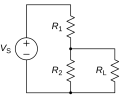When the DAC's line-out is connected to the headphone amplifier, it's signal attenuated by the volume control and raised or lowered by the gain. Thus, using the headphone amplifier can reduce the noise in the signal going to the headphones compared to using the headphone output of the DAC. This of course requires that the noise of the headphone amplifier is lower than that of the DAC's headphone output. Here are some formulas that determine when that is in fact the case. The derivations will be at the bottom.
A given chosen voltage output of the headphone amplifier connected to the DAC's line-out is denoted by W and referred to as the target voltage. Let U_HO be the output voltage of the DAC's headphone output with its volume set to full, let the noise voltage of it be N_HO and let its signal to noise ratio in dB be SNR_HO. Let the signal to noise ratio in dB of the DAC's line-out be SNR_DAC and let the noise voltage of the headphone amplifier be N_HPA. Thus, if the noise from the DAC's line out and the headphone amplifier are uncorrelsted, as long as the target voltage is as below

the noise out of the headphone amplifier will be no higher than that of the DAC's headphone output. If the inequality holds, it is lower. Further, for a given target voltage using the headphone amplifier will have the same or less noise if

Taking the logarithm to express it in dB,

where n_HPA is the headphone amplifiers noise level in dBV, i.e. 20log_10(N_HPA), and n_HO is the noise level of the DAC's headphone output in noise level in dBV, i.e. 20log_10(N_HPA). Of course, the difference between the two is just in dB.
Derivations.



A given chosen voltage output of the headphone amplifier connected to the DAC's line-out is denoted by W and referred to as the target voltage. Let U_HO be the output voltage of the DAC's headphone output with its volume set to full, let the noise voltage of it be N_HO and let its signal to noise ratio in dB be SNR_HO. Let the signal to noise ratio in dB of the DAC's line-out be SNR_DAC and let the noise voltage of the headphone amplifier be N_HPA. Thus, if the noise from the DAC's line out and the headphone amplifier are uncorrelsted, as long as the target voltage is as below
the noise out of the headphone amplifier will be no higher than that of the DAC's headphone output. If the inequality holds, it is lower. Further, for a given target voltage using the headphone amplifier will have the same or less noise if
Taking the logarithm to express it in dB,
where n_HPA is the headphone amplifiers noise level in dBV, i.e. 20log_10(N_HPA), and n_HO is the noise level of the DAC's headphone output in noise level in dBV, i.e. 20log_10(N_HPA). Of course, the difference between the two is just in dB.
Derivations.

